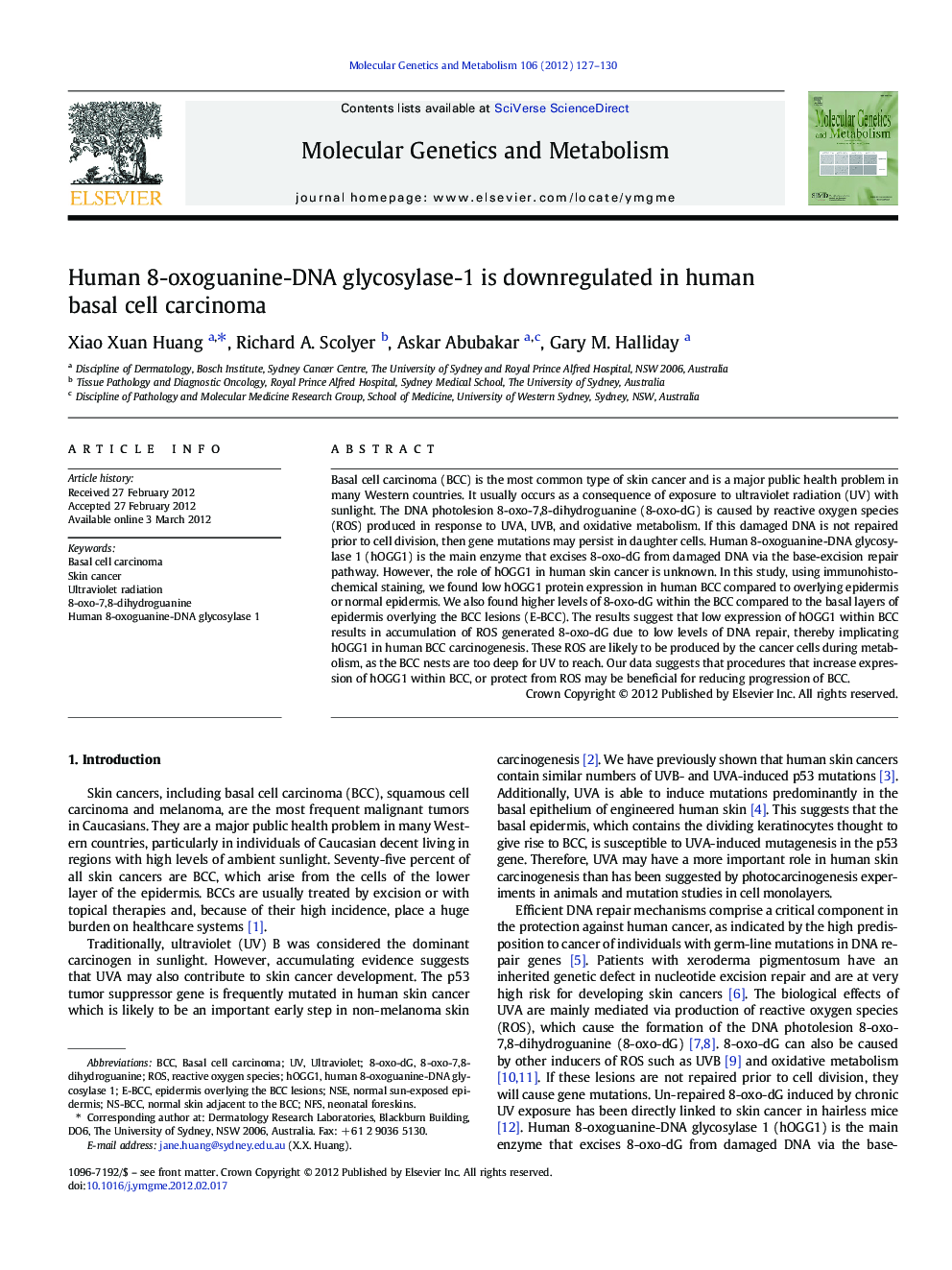| Article ID | Journal | Published Year | Pages | File Type |
|---|---|---|---|---|
| 1998531 | Molecular Genetics and Metabolism | 2012 | 4 Pages |
Basal cell carcinoma (BCC) is the most common type of skin cancer and is a major public health problem in many Western countries. It usually occurs as a consequence of exposure to ultraviolet radiation (UV) with sunlight. The DNA photolesion 8-oxo-7,8-dihydroguanine (8-oxo-dG) is caused by reactive oxygen species (ROS) produced in response to UVA, UVB, and oxidative metabolism. If this damaged DNA is not repaired prior to cell division, then gene mutations may persist in daughter cells. Human 8-oxoguanine-DNA glycosylase 1 (hOGG1) is the main enzyme that excises 8-oxo-dG from damaged DNA via the base-excision repair pathway. However, the role of hOGG1 in human skin cancer is unknown. In this study, using immunohistochemical staining, we found low hOGG1 protein expression in human BCC compared to overlying epidermis or normal epidermis. We also found higher levels of 8-oxo-dG within the BCC compared to the basal layers of epidermis overlying the BCC lesions (E-BCC). The results suggest that low expression of hOGG1 within BCC results in accumulation of ROS generated 8-oxo-dG due to low levels of DNA repair, thereby implicating hOGG1 in human BCC carcinogenesis. These ROS are likely to be produced by the cancer cells during metabolism, as the BCC nests are too deep for UV to reach. Our data suggests that procedures that increase expression of hOGG1 within BCC, or protect from ROS may be beneficial for reducing progression of BCC.
► We show that hOGG1 protein, a DNA repair enzyme, has low expression in human BCC. ► hOGG1 repairs 8-oxo-dG in reactive oxygen species damaged DNA. ► A high level of 8-oxo-dG in BCC nest is consistent with low expression of hOGG1.
